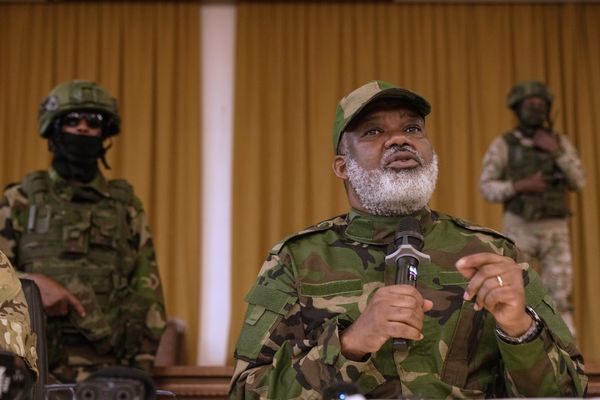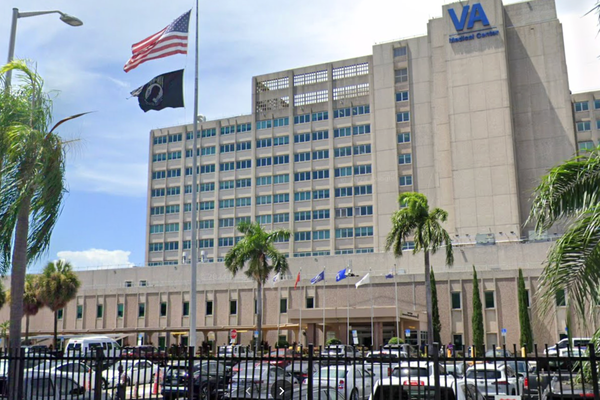Amazon (AMZN) is looking to take over the empty brick-and-mortar shops that it literally forced thousands of retailers to give up in the first place.
The online retail giant on Thursday said it plans to open Amazon Style, its first clothing, shoe and accessories' store later this year at a tony, upscale shopping complex in Los Angeles.

The move comes as Amazon continues its unrelenting path of disruption in retail -- not only online but also in physical retail, starting with its cashier-less Amazon Go stores, bookstores, full-scale grocery stores and Amazon Prime pop-up shops.
The 30,000-square-foot store's neighbors will be some of the traditional clothing and department stores Amazon has pressured over the last decade -- Nordstrom (JWN), Urban Outfitters (URBN), JCPenney (JCP) and others.
The new physical space will actually be stationed directly across the street from a JCPenney, one of the more notable victims of the transformation of U.S. retail sparked by Amazon and accelerated by the pandemic.
And it will embrace the latest and greatest tech. Items scanned at Amazon Style will be saved in the Amazon Shopping app so that customers can purchase at a later time. They will also be able to shop millions of apparel items on Amazon.com, request delivery to Amazon Style, and try on items in a fitting room.
Returns can be made in store. And Amazon Style will also feature Amazon One palm-scanning technology for faster checkout.
Amazon Keeps Gaining Physical Ground
For its part, Amazon sees a solid business case for opening physical stores that sell clothes - something it alluded to in its most recent earnings call with analysts and investors.
"We've said that we want options for customers to be able to shop online and in store," Dave Fildes, Amazon's Director of Investor Relations, said on the call, adding that the company likes the "hybrid model," and that its continues to focus on "...a lot of sort of interesting in-store experiences that will resonate with customers."

Amazon has plenty of reasons to pivot to a real-life customer offering. For one, it can be difficult to find new clothing brands and styles online -- something anyone who has ever ordered a piece of clothing or a pair of shoes on Amazon can attest to.
For another, in-store purchases still account for more than 85% of U.S. retail sales, according to the most recent figures compiled by the U.S. Commerce Department, as shoppers still venture out to see and feel how clothes look and fit.
"Customers enjoy doing a mix of online and in-store shopping. And that's no different in fashion," Simoina Vasen, the managing director of Amazon Style, said in a blog post. "There's so many great brands and designers, but discovering them isn't always easy."
Other advantages to a physical store: Customers will be able to drop off their Amazon returns at the actual store, or order online and pick them up there.
Amazon Wants to Rule the (Retail) World
In recent years, Amazon has disrupted not only the e-commerce space but also physical retail, starting with its cashier-less Amazon Go stores, bookstores, full-scale grocery stores and Amazon Prime pop-up shops.
In 2017, Amazon bought Whole Foods' 471 stores for $13.7 billion. The company also has dozens of 4-Star stores, where it sells its highest-rated merchandise, as well as Amazon Go cashier-less convenience stores. It's also building a new, separate line of grocery stores called Amazon Fresh.

As of December 31, 2020, Amazon had 611 physical stores in North America, including Whole Foods, according to its latest annual filing.
More broadly, Amazon wants to roll out technology to make shopping faster, easier and more efficient -- which was and still is the entire premise behind e-commerce and its focus on upending the retail shopping experience in the first place.
"Some of the things that we continue to be excited about and do a lot to work on are things like the Just Walk Out technology that's been in our Amazon Go stores and has now moved into some of our Amazon Fresh stores," Fildes said, adding that it eliminates most of the hassles people face in a physical store: finding what you want and waiting in line to pay for it.
TheStreet Recommends: Amazon Prime Membership Fees Could Be Going Up Soon







